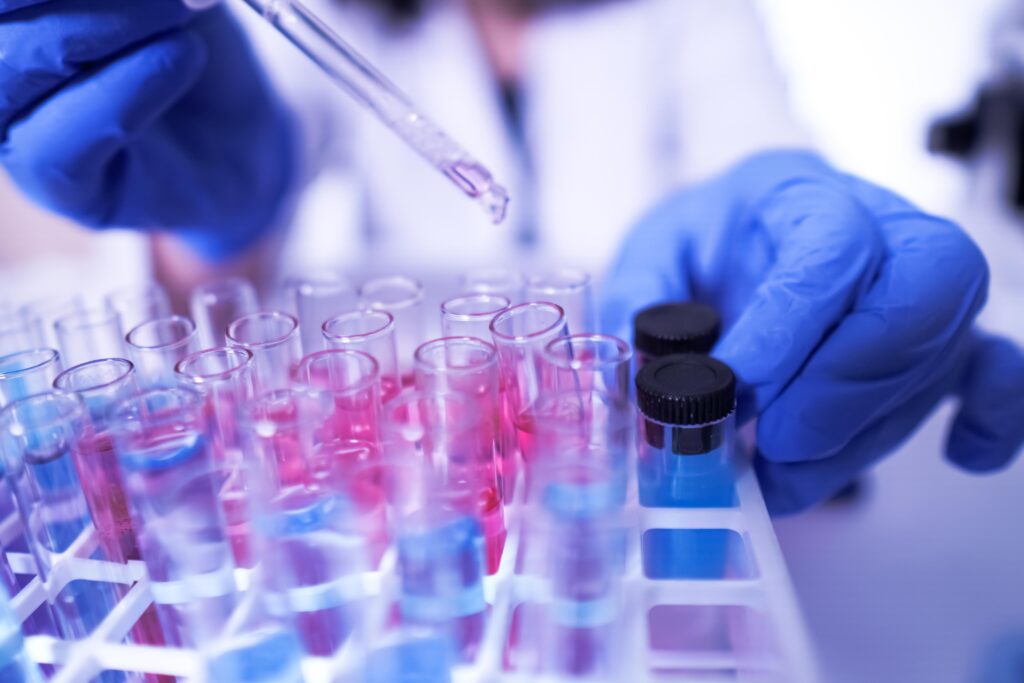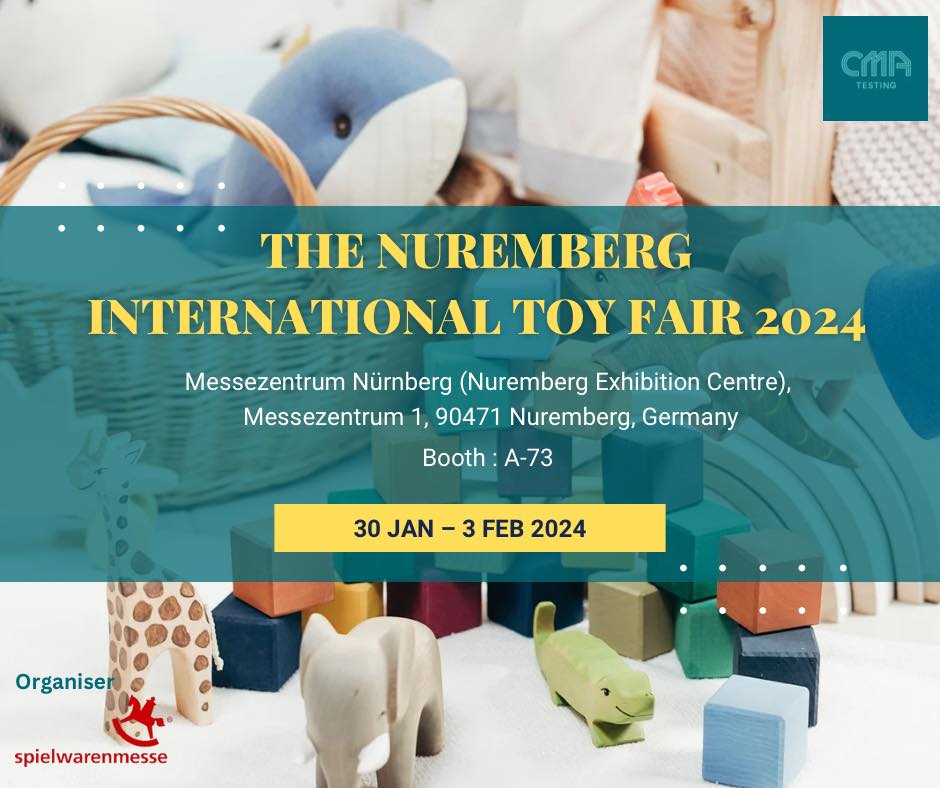
In February 2023, the European Committee for Standardization (CEN) introduced a revised edition of the reference test method for nickel release, referred to as EN 1811:2023. This updated version replaced the previous edition EN 1811:2011+A1:2015, as mentioned in Insight Vol. 1347.
On 20 December 2023, the European Union (EU) published the official Journal C/2023/1604, officially adopting the EN 1811:2023 as the harmonized standard for nickel release testing. This adoption applies to entry 27 of Annex XVII to REACH Regulation (EC) No.1907/2006.
With immediate effect, the following updated standards shall be used to demonstrate the product is compliance with entry 27 of Annex XVII to REACH regulation (EC) No.1907/2006.
| Harmonised Standards for EU REACH Annex XVII Entry 27 Nickel Release |
| EN 1811:2023 Reference test method for release of nickel from all post assemblies which are inserted into pierced parts of the human body and articles intended to come into direct and prolonged contact with the skin. |
| EN 12472:2020 Method for the simulation of accelerated wear and corrosion for the detection of nickel release from coated items |
| EN 16128:2015 Ophthalmic optics – Reference method for the testing of spectacle frames and sunglasses for nickel release |
May the dragon bring you prosperity and energy in the new year.

Helsinki, 23 January 2024 – The European Chemicals Agency (ECHA) has added five new chemicals to the candidate list of substances of very high concern (SVHC), becoming the 30th SVHC substances. The Candidate List of SVHC now contains 240 entries for chemicals. ECHA has also updated the existing entry for dibutyl phthalate that was added to the Candidate List of SVHC in October 2008 to include its endocrine disrupting properties for the environment.
Entries added to the Candidate List on 23 January 2024 and their properties:
| No | Substances Name | EC No. | CAS No. | Reason for Proposing | Use |
| 1 | 2,4,6-tri-tert-butylphenol (2,4,6-TTBP) | 211-989-5 | 732-26-3 | Toxic for reproduction (Article 57c) Persistent, bioaccumulative and toxic (PBT) (Article 57d) | Manufacture of another substance; formulation of mixtures and in fuel products |
| 2 | 2-(2H-benzotriazol-2-yl)-4-(1,1,3,3-tetramethylbutyl)phenol (UV-329) | 221-573-5 | 3147-75-9 | Very persistent and very bioaccumulative (vPvB) (Article 57e) | Air care products, coating products, adhesives and sealants, lubricants and greases, polishes and waxes and washing and cleaning products. |
| 3 | 2-(dimethylamino)-2-[(4-methylphenyl)methyl]-1-[4-(morpholin-4-yl)phenyl]butan-1-one | 438-340-0 | 119344-86-4 | Toxic for reproduction (Article 57c) | Inks and toners, coating products. |
| 4 | Bumetrizole (UV-326) | 223-445-4 | 3896-11-5 | Very persistent and very bioaccumulative (vPvB) (Article 57e) | Coating products, adhesives and sealants and washing and cleaning products. |
| 5 | Oligomerisation and alkylation reaction products of 2-phenylpropene and phenol | 700-960-7 | – | Very persistent and very bioaccumulative (vPvB) (Article 57e) | Adhesives and sealants, coating products, fillers, putties, plasters, modelling clay, inks and toners and polymers. |
Dibutyl phthalate (updated entry)
| Substances Name | EC No. | CAS No. | New Add Properties | Use |
| Dibutyl phthalate | 201-557-4 | 84-74-2 | Endocrine disrupting properties (Article 57(f) – environment) | Metal working fluids, washing and cleaning products, laboratory chemicals and polymers. |
Under REACH, companies have legal obligations when their substance is included – either on its own, in mixtures or in articles – in the Candidate List.
If an article contains a Candidate List substance above a concentration of 0.1 % (weight by weight), suppliers have to give their customers and consumers information on how to use it safely. Consumers have the right to ask suppliers if the products they buy contain substances of very high concern. Importers and producers of articles have to notify ECHA if their article contains a Candidate List substance within six months from the date it has been included in the list (23 January 2024).
Under the Waste Framework Directive, companies also have to notify ECHA if the articles they produce contain substances of very high concern in a concentration above 0.1 % (weight by weight). This notification is published in ECHA’s database of substances of concern in products (SCIP).
At CMA Testing, we have a team of qualified specialists and cutting-edge equipment to offer you complete REACH solutions and SVHC screening services.

The Tokyo International Gift Show 2024
Date: 6th February 2024 to 8th February 2024
Venue: Tokyo Big Sight
CMA Testing is delighted to join this 3-day mega event and showcase our diverse testing services to visitors from all around the world.

The new amendments apply to the 17 designated Chinese herbal medicines in the schedule of the Chinese Medicine Ordinance (Cap. 549 of the Laws of Hong Kong) (“the Ordinance”). The revised limits for heavy metals and toxic elements standards have come into effect on 31 December 2023, and a grace period of 12 months will be implemented thereafter (i.e., until 30 December 2024) for businesses to be able to adapt to the related amendments.
For details of the latest arrangement on revised limits of heavy metals and toxic elements in Chinese herbal medicines (Chinese version only), please visit: https://www.cmro.gov.hk/html/eng/whats_new/letter_trader.html
May this holiday season bring joy and success to you. Merry Christmas and Happy New Year!
Holiday Notice:
CMA Industrial Development Foundation Limited:
Please be informed that our office will be closed from 24 Dec to 26 Dec 2023 and operations will be resumed on 27 Dec 2023 .

The Ministries of Japan published Cabinet Order No. 343 of 2023, which amends the Act on the Evaluation of Chemical Substances and Regulation of their Manufacturer etc., on 1 December 2023. The proposed order restricts the utilization of PFHxS, its salts, and their isomers in the following products. This order will go into force on 1 February 2024.
Beginning on 1 June 2024, the following products containing PFHxS, its salts, and its isomers will not be allowed for importation.
- Water resistant and oil resistant textile;
- Etching agent used for metal processing;
- Etching agents used in the manufacture of semiconductors;
- Surface treatment agent for plating or preparation;
- Antireflection agent for use in semiconductor manufacturing;
- Resist for semiconductor.
- Water repellent, haze oil and fiber protecting agent;
- Fire extinguisher, fire-extinguishing agent, and fire-extinguishing foam;
- Water resistant and oil resistant clothes;
- Water repellent and oil repellent floor covering;
You can refer to the regulation here for more details.

The Nuremberg International Toy Fair 2024
Date: 30th January 2024 to 3rd February 2024
Venue: Nuremberg Exhibition Center
Booth: A-73
CMA Testing is delighted to join this 4-day mega event and showcase our diverse testing services to visitors from all around the world.
Sources and Hazards of Microplastics
There are two sources of microplastics (i.e. synthetic polymer microparticles), Primary Microplastics and Secondary Microplastics. The former is purposefully added during the product production process to increase its product functions. It is often used in personal care products, cosmetics and detergents, such as whitening toothpaste, exfoliating facial cleanser, washing beads, etc. The latter is formed unintentionally, due to the decomposition of large pieces of plastic waste, the wearing and tearing of tires and road paint, or the washing of synthetic clothing.
The main hazards of microplastic:
- Microplastics in the environment such as soil, rivers, lakes and oceans, causing pollution to our ecological system;
- Microplastics have small particle size with large in area, and strong adsorption capacity. They are carriers for the transfer of toxic and harmful substances;
- Microplastics in our ecological system then enter the human body by food intake, drinking water, skin contact, etc. After entering the human body, they can be excreted but remain in certain extent. The microplastics remaining in the human body will not be degraded by the human body, causing serious harm to human health.
Restriction on Microplastics in EU
On September 27, 2023, the European Union published Commission Regulation (EU) 2023/2055 amending Annex XVII of REACH Regulation in its Official Journal, adding entry 78 as regards synthetic polymer microparticles (i.e. microplastics) to the list of Annex XVII. The new requirements entered into force on 17 October 2023.
The definition of microplastics in Commission Regulation (EU) 2023/2055:
Solid polymer and which fulfil both of the following conditions:
- are contained in particles and constitute at least 1 % by weight of those particles; or build a continuous surface coating on particles;
- at least 1 % by weight of the particles referred to in point (a) fulfil either of the following condition:
- all dimensions of the particles are equal to or less than 5 mm;
- the length of the particles is equal to or less than 15 mm and their length to diameter ratio is greater than 3.
The following polymers are excluded from the above definition:
- Polymers that are the result of a polymerisation process that has taken place in nature, independently of the process through which they have been extracted, which are not chemically modified substances;
- Polymers that are degradable as proved in accordance with REACH Appendix 15;
- Polymers that have a solubility greater than 2 g/L as proved in accordance with REACH Appendix 16;
- Polymers that do not contain carbon atoms in their chemical structure.
Limit Requirements for Microplastics
| Microplastics | Scope | Requirements |
| Substance | Prohibited | |
| Mixtures | <0.01% 1 (by weight) where the microparticles are present to confer a sought-after characteristic 2 |
1 The concentration of microplastics cannot be determined by available analytical methods or accompanying documentation, in order to verify the compliance with the concentration limit, only the particles of at least the following size shall be taken into account:
- 0.1 μm for any dimension, for particles with ≤ 5 mm in all dimensions
- 0.3 μm in length, for particles with a length ≤15 mm and a length to diameter ratio greater than
2 It means concerning the intentional added microplastics, while not concerning unintentionally generated microplastics.
Exemptions from the above Limit Requirements
Exemption of synthetic polymer microparticles, as substances on their own or in mixtures:
- Synthetic polymer microparticles which are contained by technical means so that releases to the environment are prevented when used in accordance with the instructions for use during the intended end use;
- Synthetic polymer microparticles the physical properties of which are permanently modified during intended end use in such a way that the polymer no longer falls within the scope of this entry;
- Synthetic polymer microparticles which are permanently incorporated into a solid matrix during intended end use.
The following products are exempted:
- Synthetic polymer microparticles, as substances on their own or in mixtures, for use at industrial sites;
- Medicinal products within the scope of Directive 2001/83/EC and and veterinary medicinal products within the scope of Regulation (EU) 2019/6;
- EU fertilising products within the scope of Regulation (EU) 2019/1009;
- Food additives within the scope of Regulation (EC) No 1333/2008;
- In vitro diagnostic devices, including devices within the scope of Directive (EU) 2017/746;
- Food within the Article 2 of Regulation EC) No 178/2002, and feed as defined in Article 3(4) of that Regulation.
Although the limit requirements are exempted, suppliers of synthetic polymer particulate products containing the above exempted limit requirements should follow the Regulation (EU) 2023/2055 requires relevant product information and declarations.
Effective Date
Except for specific products, the new restrictions have entered into effect on October 17, 2023. Effective dates for specific products are as follows:
Verifications for exemption categories are:
| Clauses | Restricted Products | Products Definitions | Effective Date |
| 6 (a) | encapsulation of fragrances | – | 17 October 2029 |
| 6 (b) | rinse-off products | point (1)(a) of the Preamble to Annexes II to VI to Regulation (EC) No 1223/2009 | 17 October 2027 |
| 6 (c) | lip products | point (1)(e) of the Preamble to Annexes II to VI to Regulation (EC) No 1223/2009 | 17 October 2035 |
| nail products | point (1)(g) of the Preamble to Annexes II to VI to Regulation (EC) No 1223/2009 | 17 October 2031 – 16 October 2035 : nail products and make-up products with labeling: “This product contains microplastics.” | |
| make-up products | |||
| 6 (d) | leave-on products | point (1)(b) of the Preamble to Annexes II to VI to Regulation (EC) No 1223/2009 | 17 October 2029 |
| 6 (e) | detergents, waxes, polishes and air care products | Article 2(1) of Regulation (EC) No 648/2004 | 17 October 2028 |
| 6 (f) | medical devices | Regulation (EU) 2017/745 | 17 October 2029 |
| 6 (g) | fertilizing products | Article 2, point (1), of Regulation (EU) 2019/1009, which do not fall within the scope of that Regulation; | 17 October 2028 |
| 6 (h) | plant protection products | Article 2(1) of Regulation (EC) No 1107/2009 | 17 October 2031 |
| seeds treated with those products, and biocidal products | Article 3(1), point (a), of Regulation (EU) No 528/2012 | ||
| 6 (i) | products for agricultural and horticultural uses | not covered by points (g) or (h) | 17 October 2028 |
| 6 (j) | granular infill for use on synthetic sports surfaces | – | 17 October 2031 |
- Verify non- microplastics, test and verify particles size to see whether they belongs to the microplastics defined in entry 78 of REACH Annex XVII.
- Verify biodegradability, such as OECD TG 310, EN ISO 14852:2021, etc.
- Verify solubility, such as OECD Guideline 120, OECD Guideline 105.
- Verify carbon atoms. By definition, microplastics do not contain carbon atom structures and are not subject to the (EU) 2023/2055 microplastics restriction order.
Ban of Plastic Glitter
Glitter is often added to daily products, such as nail polish, eye shadow, lip gloss, etc.; it is also used in toy products such as crystal mud, glitter DIY toys, toy cosmetics, and is also often used in textiles and clothing. A decorative element that can be used to add brightness and color to clothing, makeup and toys.
However, plastic glitter on its own (also called loose plastic glitter) is to be regarded as a mixture under REACH and therefore is in the scope of Regulation (EU) 2023/2055. Currently, the European Commission is expected to publish a detailed Q&A document on microplastics by the end of 2023 to help with the implementation of the new rules. At the same time, the European Commission issued a guidance document on glitter products (detailed requirements on glitter products will also be added to the Q&A document expected to be released at the end of the year).
Why Does The EU Want to Ban Plastic Glitter?
The purpose is not to ban all glitter but replace plastic glitter with more environmentally friendly glitter that does not pollute our oceans. The determining factors for the EU’s restriction of plastic glitter are the following three aspects:
- One is the composition: Only glitter made of non-biodegradable, insoluble is concerned. Glitter made from biodegradable, soluble, natural or inorganic materials is not considered microplastics and can continue to be sold.
- The second is the uses: The use of non-biodegradable, insoluble plastic glitter in products without a transition period and is banned as of 17 October 2023, for example art and crafts, toys, textiles (with certain exceptions). Glitter used in cosmetics and detergents (and for other uses benefiting from a specific transitional periods under paragraph 6 of the restriction) can continue being sold until the end of that period.
- The third is the molding method (loose or trapped or affixed glitter): Plastic glitter is not affected by the ban if, when used, it is trapped in a solid matrix (e.g. glitter glue), solid films (e.g. paints, inks) or solid objects (e.g. inside jewellery, spray can caps, etc.) or is fully contained (e.g. in snow globes). Concerning plastic glitter that is affixed to objects, the sale ban would apply as of 17 October 2023 only to glittered decorative objects (such as – but not limited to – Christmas decorations or party hats) from which glitter detaches during normal use.
There are exceptions that are not concerned by the restrictions:
- Products, including glitter, made of material that is inorganic (e.g. glass, metal), natural, biodegradable or soluble in water (out of scope as they are not considered microplastics).
- Beads and sequins (and other decorations) intended to be threaded or sewn.
- Microplastics, including plastic glitter, that contained by technical means (e.g. enclosed in snowballs) or permanently incorporated in a solid matrix (e.g. trapped in glue, paints or inks, or inside solid objects).
- In case of glittered articles for which the decorative function is secondary – such as textiles used for garments or footwear, glitter is always regarded as an integral part of the article. These glittered articles – eg: clothing, shoes, curtains – are out of the scope of the restriction.
For glittered articles having a purely decorative function, or for which the decorative function is the main function of the article – such as textiles used in certain art and craft kits, toy/party hats, Christmas decorations, etc. – glitter can only be regarded as an integral part of the article if it does not detach from the article during normal end use (including storage). In case glitter detaches from the article during normal end use, the glittered article is to be regarded as a combination of an article (e.g. the article without the glitter) and a mixture (the glitter). In the latter case, the ban applies to the glitter (but in practice, the whole glittered article cannot be sold).

